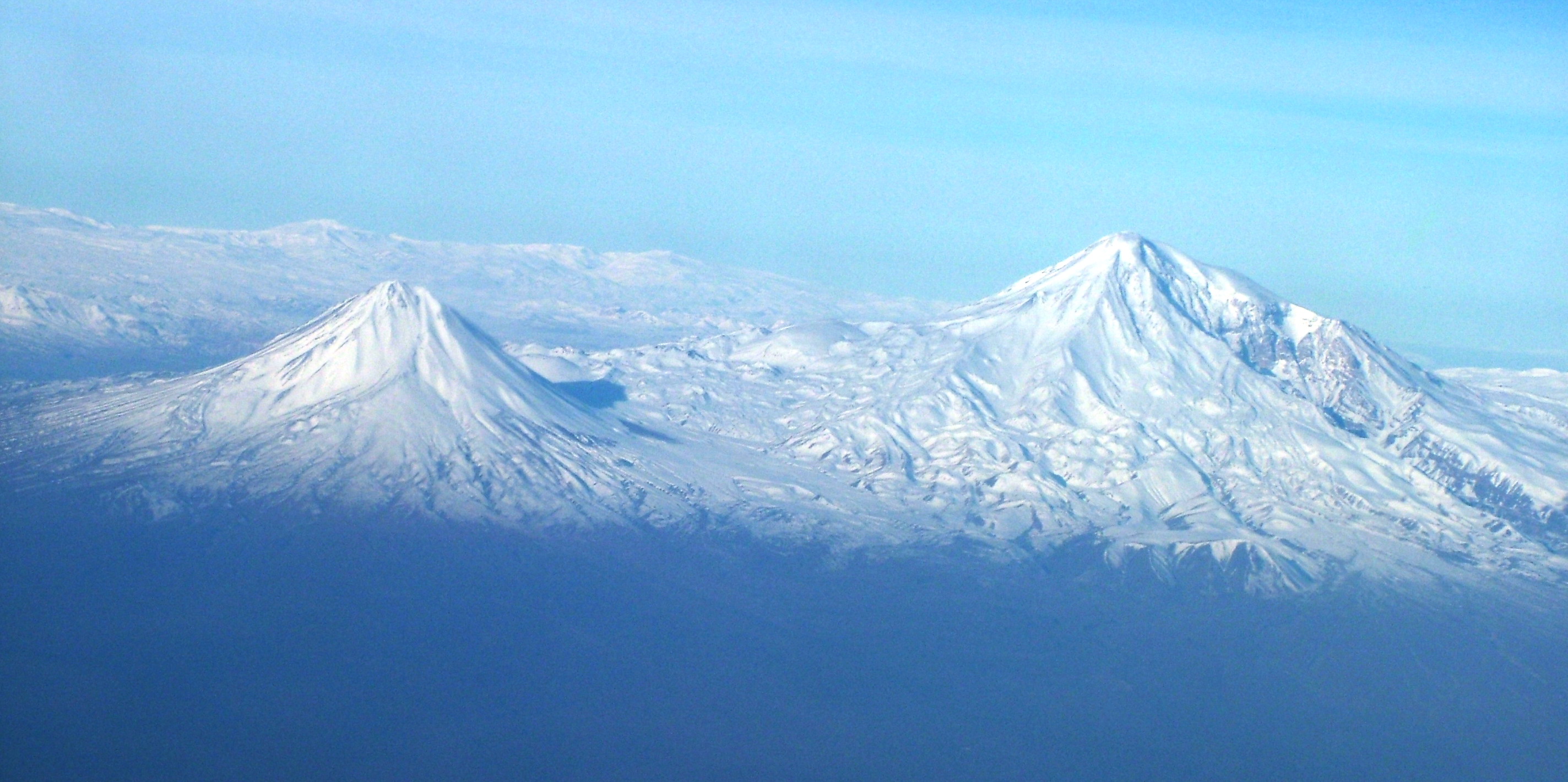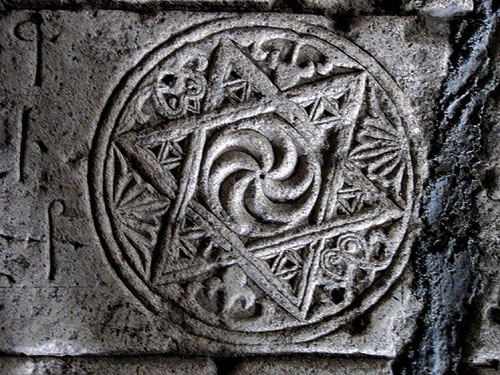Return
|
Ref ID: 1N2017/1909 | Posted On: 11-02-2017 | Updated on: 11-02-2017
|
|
The Six Pointed Star of Armenia
The Six Pointed Star of Armenia
A few months ago, I made a YouTube video about the history of the Armenian Wheel of Eternity. Maybe the most iconic among many ancient Armenian symbols. As expected people started to ask questions and post comments. Among the commentators a keen observer noticed that in some cases Armenians depicted the Wheel of Eternity inside a six pointed star. Because of the many questions I received since, I’ve decided to finally grant this symbol attention in a manner of a blog post.

Marble tombstone of the Armenian Grand Prince Hasan Jalal Vahtangian (1214-1261)


The oldest known observatories are located in Armenia. Dated as early as 4200 BCE, Karahunj and the ca. 2800 BCE observatory at Metsamor allowed Ancestral Armenians to develop geometry to such a level they could measure distances, latitudes and longitudes, envision the world as round, and were predicting solar and lunar eclipses about 1000 years before the Egyptians began doing the same. Armenian architecture is often geometrically sound with straight lines connecting columns and mathematical precision. The geometry of the Armenian architecture has stood the test of time by preserving many ancient buildings in a region dominated by war, poverty and natural disasters. The fortress cities and temples that have been excavated in Armenia (some going back as far as 7000 years) show a remarkable awareness of using geometry in constructing sacred buildings, using a complex system of squares, rectangles, circles, polygons with intersecting patterns.
Geometry emerges from the study of natural laws. With such knowledge one can build structures, create devices and predict astral events. As such geometrical shapes have been considered magical by the ancients. For without geometry, you cannot build anything, and its knowledge was the key to survival, and believed to be a key to unlocking the secrets of the universe. This love for creation/construction has enabled the early Armenians to value geometrical shapes and symbols giving them a prominent place in the Armenian Culture.

Floor plan of a Medieval Armenian Church of the Shepherd
Among many symbols Armenians used the six pointed star for architectural purposes. Early Armenians believed the symbol to hold magical powers and incorporated it in architecture, astronomy and sacred art. Attesting to that are the numerous Armenian churches that are constructed in the shape of a six pointed star, the usage of hexagrams to support the dome or simply as sacred decoration protecting the Church like magic charms.

Hexagrams on Etchmiadzin Cathedral (303 AD.)
The first and the most important Armenian Cathedral of Etchmiadzin (303 AD, build by the founder of Christianity in Armenia) is in fact decorated with many types of ornamented hexagrams. Another example is seen on the tomb of an Armenian prince of the Hasan-Jalalyan dynasty of Khachen (1214 A.D.) in the Gandzasar Church of Artsakh (see above). Maybe the most famous example of architectural usage of a hexagram can be admired in the 12th century Armenian Church, the Cathedral of St. James in Jerusalem. Where the hexagram shaped arches are supporting the dome. Similar dome arches in the shape of a six pointed star can be found throughout ancient Armenia. To name a few; the excellent craftsmanship of the Khorakert monastery dome, or the 13th c. Khoranashat monastery (see pictures bellow)

Arches and dome of St James Armenian Cathedral

The handle of a dagger excavated in Ashtarak (Nerkin Naver) burial (3rd millenium BC., Armenia)
That the Armenians are acquainted with this symbol from the times immemorial became once again clear when the oldest known depiction of a six pointed star (dating back to the 3rd millennium BC.) was excavated in the Ashtarak burial mound in “Nerkin Naver” (in Armenia). This was confirmed by a series of radiocarbon analysis of artifacts, conducted in laboratories in Germany and the USA. The handle of a dagger depicts the worlds earliest decoration of a six-pointed star buried in a burial mound containing over 500 graves.
As people who love to build and create Armenians have always valued science. Geometry in particular has a long history in Armenian arts, religion as well as sciences. While the usage of hexagrams (as I have demonstrated) has been significant throughout the course of Armenian history, there exist many other geometrical shapes and symbols prominent in Armenian culture. Geometry is after all bound to Armenian culture. The (eight pointed) Armenian Star for example deserves it’s own entry and will be covered next time around.
In closing the following are a few more examples of hexagram usage in ancient Armenia.






Relief of a medieval Armenian coat-of-arms found amongst Ani’s ruins marked with the name Sargis (clockwise)

The altar of Mšakavank monastery 5th c AD

Marble tombstone of the Armenian Grand Prince Hasan Jalal Vahtangian (1214-1261)

























